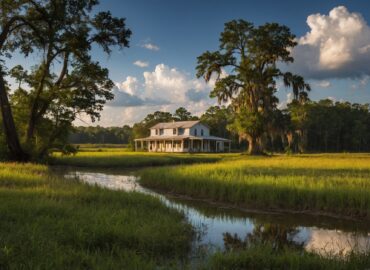Where is Grosse Pointe? This city is located between Michigan’s biggest city, Detroit, to the south. To the north sits St Clair Shores, a city also on Lake St Clair. When looking at Grosse Pointe, you have to break it down into the multiple different Grosse Pointes there are.
To start, there are the following:
- Grosse Pointe
- Grosse Pointe Farms
- Grosse Pointe Park
- Grosse Pointe Woods
- Grosse Pointe Shores
Each of these cities offers its own different and unique atmospheres, but all together make up the almost twenty-three square miles that is Grosse Pointe. From firsthand experience, when you enter the city itself, it’s genuinely shocking.
What makes it such an experience is that Grosse Pointe is a highly affluent city with generations of old money yet is surrounded by some of the poorest areas in the entire state. Mack Ave decides this area straight down the middle. On the west side of Mack is Detroit, and on the east side is Grosse Pointe.
As Detroit grows, flourishes, and restores its vibrancy, and the public adjusts to the new Downtown in Michigan, hopefully, the division will be less noticeable. A bonus for residents of Grosse Point as their property values will start to rise instead of decline from its neighboring city. Ok, let’s talk about the history of Grosse Pointe, a beautiful lake town!
Starting From the Beginning
This city began as a French settlement and evolved into a haven for affluent residents; the story of Grosse Pointe is one of resilience, prosperity, and community spirit. The roots of Grosse Pointe trace back to the early eighteenth century when French explorers and fur traders ventured into the region, establishing trading posts along the Great Lakes. Among these pioneers was Antoine de la Mothe Cadillac, who founded Fort Pontchartrain du Détroit in 1701, laying the groundwork for the future settlements to come.
Something a lot of people aren’t aware of is that for a short time, this city wasn’t even a part of our country itself. In 1762, following the French and Indian War, the region came under British control, and Grosse Pointe became part of the vast territory known as British Canada. It wasn’t until the American Revolution and the subsequent Treaty of Paris in 1783 that the area fell under American jurisdiction.
This city didn’t start to really make something of itself until around the early 19th century as waves of settlers, primarily British and German, migrated to the area in search of fertile land and economic opportunities. The rich soil and climate made Grosse Pointe the ideal location for agriculture, and farms began to consume the landscape. This helped supply the nearby Detroit with fresh produce. By the middle of the 19th century, Grosse Pointe had established itself as a high-class destination for the wealthy of Detroit who were seeking more of a suburban feel over the busyness of the city. At this time, steamboats were gaining popularity, which furthered Grosse Pointe’s access through Lake St Clair. This fueled this city’s tourism market, and it was a well-known place to get away from it all during the summer months.
Moving Up
One of the defining moments in Grosse Pointe’s history came with the railroad in the late 19th century, connecting the community to Detroit and all around the country. This newfound accessibility accelerated the development of the city. This led to the construction of elegant homes along the lakefront and the establishment of prestigious clubs such as the Grosse Pointe Yacht Club. This club still stands today as one the most elite boating clubs to be a part of on Lake St Clair.
From personal experience, just seeing the club from Lake Shore Drive shows how beautiful this place is. Throughout the late 19th and early 20th centuries, Grosse Pointe experienced a period of unprecedented growth. The rise of the automobile industry in nearby Detroit brought newfound wealth to the region, attracting some of Michigan’s most notorious and wealthy business people, including the Ford, Dodge, and Fisher families, who built grand estates along Lake Shore Drive. That still stands today; the Ford estate has now been turned into a museum.
Moving to the Modern Era
The Roaring Twenties ushered in a golden era for Grosse Pointe, characterized by opulent mansions, lavish parties, and a vibrant social scene. The Grosse Pointe War Memorial, originally built as a tribute to fallen soldiers of World War I, became a hub for hosting concerts, galas, and community events. However, the Great Depression dealt a significant blow to Grosse Pointe’s economy as families struggled to maintain their lavish lifestyles.
The subsequent years saw a decline in fortunes, compounded by the outbreak of World War II, which brought rationing and drastic measures to the country, even to the ultra-rich of Grosse Pointe. Despite these challenges, Grosse Pointe emerged from the war, ready to get back to what it was. This city, like so many others post-war, was fueled by the post-war economic boom and the return of prosperity. At this time, the suburbs were booming across America, and Grosse Pointe experienced a surge in population as families sought spacious homes and good schools in the suburbs.
Grosse Pointe Today
In the later half of the 20th century, Grosse Pointe evolved into a tight-knit community known for its strong sense of tradition. The preservation of historic homes and buildings became a priority, ensuring that Grosse Pointe’s rich architectural heritage would be passed down to future generations, which has gone as planned as of today. Now, Grosse Pointe remains a sought-after destination for families and individuals seeking a blend of small-town charm, convenience of the city close by, and wealth. To this day, the community boasts a vibrant cultural scene with art galleries, theaters, and music venues. The Grosse Pointe Historical Society works tirelessly to preserve and promote the area’s heritage, offering tours, lectures, and educational programs.
History of Grosse Pointe Michigan
As Grosse Pointe continues to write its story today, one thing remains clear. Its legacy as of history, culture, and community still stands. From its humble beginnings as a French trading post to a premier, affluent, and sought-after lake community.





